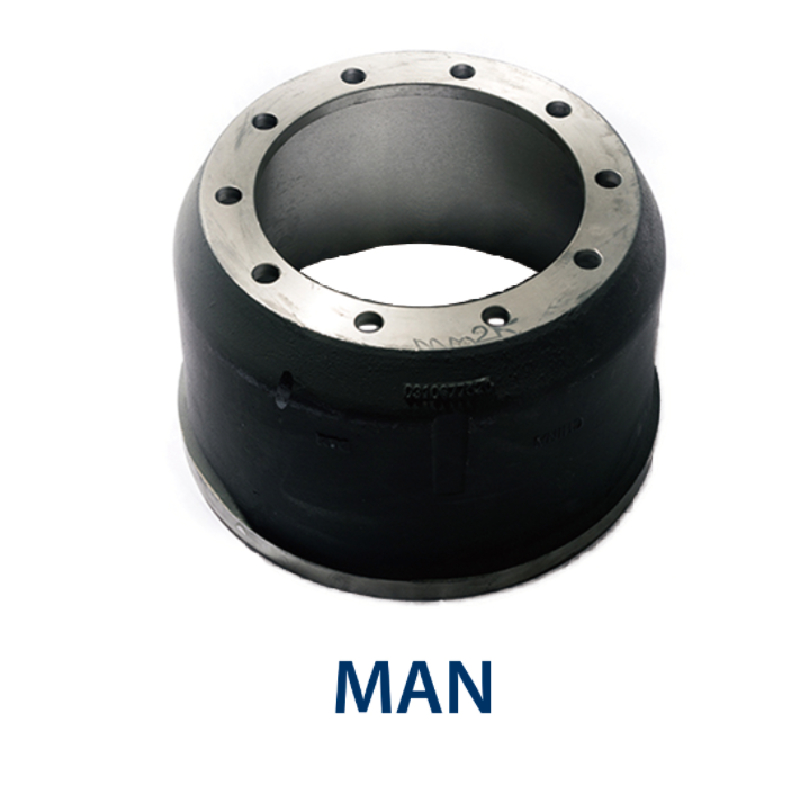12 月 . 04, 2024 15:58 Back to list
Durable Performance of Cast Iron Brake Drums in Automotive Applications
The Significance of Cast Iron Brake Drums in Automotive Engineering
Cast iron brake drums have been a cornerstone in automotive engineering for decades. Their robust mechanical properties and ability to withstand high temperatures make them an enduring choice for vehicle braking systems. Understanding the advantages, manufacturing processes, and applications of cast iron brake drums sheds light on why they remain prevalent in the automotive industry.
Understanding Brake Drums
Brake drums are integral components of drum brake systems, which are designed to slow down or stop a vehicle. When a driver applies the brakes, friction is produced between the brake shoes and the inner surface of the drum, leading to deceleration. Cast iron, known for its durability, heat resistance, and excellent wear characteristics, has been widely utilized in the production of these crucial elements.
Advantages of Cast Iron Brake Drums
1. Durability Cast iron is exceedingly strong and can withstand significant wear and tear. This durability is paramount in braking systems, where components are subjected to extreme stress and friction. As a result, cast iron brake drums typically have a longer lifespan compared to those made from other materials.
2. Heat Resistance Braking generates a substantial amount of heat due to friction; therefore, the ability to dissipate this heat is crucial. Cast iron possesses excellent thermal conductivity, allowing it to manage heat effectively. This characteristic reduces the risk of brake fade, a condition where brake efficiency diminishes due to overheating.
3. Cost-Effectiveness Compared to alternatives such as aluminum or composite materials, cast iron is more cost-effective due to its availability and ease of manufacturing. This affordability makes cast iron brake drums a popular choice for both original equipment manufacturers (OEMs) and aftermarket suppliers.
4. Ease of Production The manufacturing processes for cast iron brake drums are well-established and efficient. Techniques such as sand casting or shell molding allow for mass production with minimal waste. Manufacturers can produce large quantities of brake drums, ensuring a steady supply for the automotive market.
cast iron brake drum

5. Reparability Another significant advantage of cast iron is its reparability. In instances where wear and tear occur, cast iron brake drums can often be resurfaced to restore their original dimensions, extending their service life.
Manufacturing Process of Cast Iron Brake Drums
The production of cast iron brake drums typically starts with the creation of a mold. The mold is made using high-quality sand that can withstand the molten cast iron's high temperatures. Once the mold is ready, molten cast iron is poured into it and allowed to cool and solidify. After cooling, the drums are removed from the mold and undergo detailed machining processes to achieve the necessary tolerances and surface finishes.
After machining, a quality control inspection is performed to ensure that each drum meets the required specifications. This step is crucial, as even minor defects can lead to performance issues. Once cleared, the brake drums are either coated with protective finishes to prevent corrosion or sent directly to automotive manufacturers for installation.
Applications of Cast Iron Brake Drums
Cast iron brake drums are most commonly found in light to medium-duty vehicles, including sedans, vans, and trucks. They are particularly advantageous in situations demanding durability and heat dissipation, such as in heavy loads or frequent stop-and-go conditions. Additionally, while some high-performance vehicles favor disc brake systems, cast iron drum brakes are still utilized in various applications where efficiency and cost-effectiveness outweigh the need for extreme performance.
Conclusion
In summary, cast iron brake drums are a vital component in automotive braking systems, offering an array of advantages including durability, heat resistance, cost-effectiveness, and ease of production. Their longstanding presence in the automotive industry highlights their reliability and suitability for various applications. As technology continues to advance, the manufacturing processes and materials may evolve, but the inherent qualities of cast iron ensure that it will remain a key player in the realm of brake drum technology for years to come.
-
Brake Drum for Kamaz Trucks Durable OEM Replacement & High Performance
NewsMay.30,2025
-
Brake Drum Man High-Quality Drum Brake & Shoe Solutions
NewsMay.30,2025
-
High-Performance Brake Drum for Kamaz Trucks Durable Drum Brake Components
NewsMay.29,2025
-
Brake Drum Man High-Quality Drum Brake Drums & Brake Shoes
NewsMay.29,2025
-
Brake Drum MAZ High-Performance & Durable Replacement Parts
NewsMay.29,2025
-
heavy truck brake drums
NewsMar.07,2025
